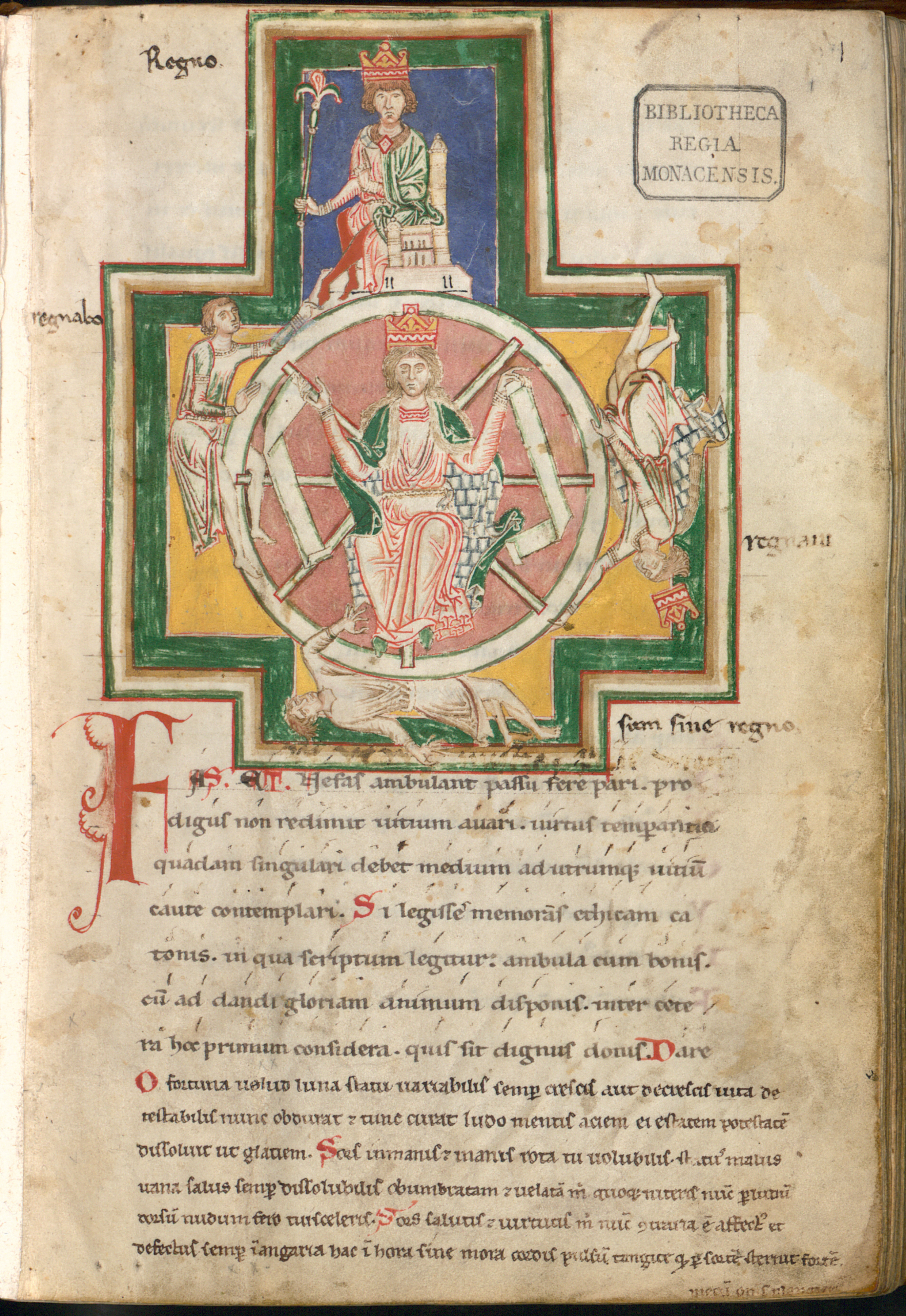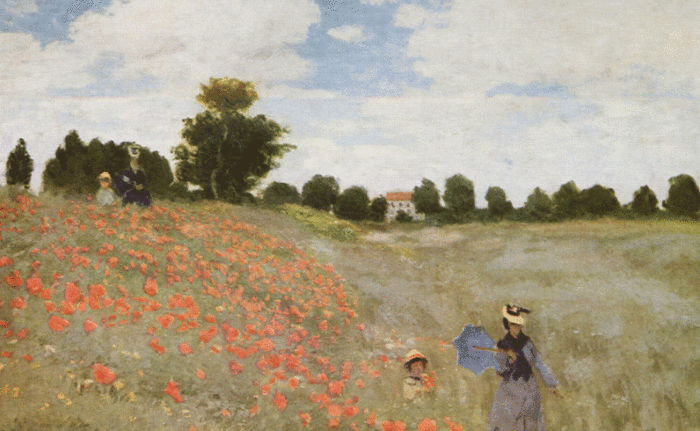On April 26, 27 & 28 the Houston Symphony presents Carl Orff’s spectacular masterpiece, Carmina Burana. In this post, discover how a once-obscure medieval tome inspired one of the most popular pieces of music of all time. Get tickets and more information here.
On March 29, 1934, Carl Orff received a much anticipated parcel with his mail. It contained an obscure book whose title had happened to catch his eye in a catalogue some weeks before. He later recalled, “On opening it I immediately found, on the front page, the long famous picture of ‘Fortune with her wheel,’ and under it the lines:
“O Fortuna
velut luna
statu variabilis
…

“Picture and words seized hold of me. […] a new work, a stage work with singing and dancing choruses, simply following the illustrations and texts, at once came into my mind. On the very same day I had outlined a sketch in short score of the first chorus ‘O Fortuna.’”
The book was a copy of the Carmina Burana, an anthology of medieval poetry in Latin and vernacular languages compiled in Austria circa 1230. According to legend, the poems were the work of the goliards, bands of irreverent students who indulged in womanizing, drinking, gambling and satirical verse as they wandered from university to university. Though scholars have since questioned this attribution, the worldly themes of many poems from the Carmina Burana certainly fit with the goliard legend.
The Music
It was precisely these “goliardic” themes that interested Orff. Of the many poems included in Carmina Burana, Orff selected 24 and organized them into several sections: “In Springtime”; “On the Green”; “In the Tavern”; “The Court of Love”; and “Blanziflor et Helena.” Framing these is “O Fortuna,” the most famous part of Carmina Burana, a fatalistic chorus in praise of Fortune, the cruel goddess who brings both pleasure and suffering:
Spring gradually awakens the earth and stirs humanity’s desire for love throughout “In Springtime,” and by “On the Green” the young men and women of the world are engaged in whirling round dances and playful flirtation.
The joyful atmosphere acquires a darker edge for “In the Tavern,” in which the baritone soloist declares “I am eager for the pleasures of the flesh more than for salvation.” After an unforgettable song in which the tenor impersonates a swan roasting on the fire, we also hear from the wily “abbot of Cockaigne,” a gambling shark who sings a parody of ecclesiastical plain chant. A humorous drinking song for men’s chorus concludes the adventure.
In “The Court of Love,” the soprano and baritone soloists assume the roles of young lovers who begin apart, but are drawn together with each song. In addition to the chorus of men and women, a cupid-like children’s chorus provides encouragement. At last, the soprano gives in to the baritone’s entreaties with a climactic high B-natural. The chorus celebrates with “Blanzifor et Helena,” a hymn in praise of Venus, but the rejoicing ends with a reprise of “O Fortuna” reminding us of the fleetingness of life’s pleasures.
Orff's Vision
Goliards or no, the quasi-pagan images and impulsive characters of the Carmina appealed to Orff, who sought to evoke primal, intense emotions. Orff himself was a man of considerable appetites (he would marry four times over the course of his life), but his inspiration was mainly an artistic one. His early compositions show influences from Debussy and Stravinsky, but beginning in 1919 he became fascinated by early music from the baroque and renaissance. Regarding his interest in music and texts from the past, he said, “I do not feel it to be old, only valid. The dated elements are lost and the spiritual strength remains.”

He had particular success in reviving sung, theatrical works, and decided to apply their lessons to his own music. He seems to have taken the early 17th century dictum “prima le parole, poi la musica” (“first the words, then the music”) to heart and sought to create a new kind of theatrical music that would place the expression of a text above all else. While other composers were creating increasingly complex, dissonant and often recondite styles in their pursuit of musical modernism, Orff went in the opposite direction, opting for a radical simplification of musical style that would communicate directly and powerfully with listeners. With its simple modal harmonies, driving ostinatos (repeated rhythmic figures) and formal patterns constructed of sectional blocks of music, Carmina Burana would be the most successful realization of his ideals.
As mentioned in the quote above, Orff originally envisioned Carmina Burana as “a stage work with singing and dancing choruses” complete with sets, costumes and dancers. Orff sought to reinvent Wagner’s concept of gesamtkustwerk (“total art work”—a theatrical musical piece that would combine all the arts in one), but in place of long, Wagnerian dramas about gods and heroes, Orff wanted to create something more ritualistic and communal. For its premiere at the Frankfurt Opera in 1937, Carmina was fully staged, but it loses none of its impact in the concert hall. Indeed, in modern times staged performances are much rarer than concert ones where the music can be the prime focus.
The Dark Side of Success
Despite its success and lasting popular appeal, Carmina Burana did not spawn a new form of musical theater. The reasons for this are mainly political; Carmina Burana has the unfortunate distinction of being the only piece of music composed in Nazi Germany to enter the standard repertoire. Orff was uninterested in politics and found the Nazi’s anti-Semitic dogmas ludicrous; he was himself a quarter Jewish, a secret he carefully guarded throughout the Nazi era. Nevertheless, he could not resist the temptation of professional success. Though he had the opportunity to emigrate and start over in the United States in 1938, he chose to remain in Germany where Carmina Burana was already famous, and he enjoyed money, privileges and dozens of performances of his masterpiece throughout the war.
At least to a degree, Orff would pay for his Faustian bargain; his reputation never fully recovered after the war. A younger generation of composers viewed his music as irredeemably tainted and turned to alternative forms of musical modernism instead. Though he would continue to compose, none of his subsequent works would ever duplicate the popular success of Carmina, and his principal post-war legacy is his innovative work in music pedagogy. Years later in the late 1960s, Carmina Burana would ironically be reinterpreted again as a harbinger of free love and a rebellious, youthful counterculture, associations which it retains today. Though it would be difficult to prove a direct evolution from Orff, the practitioners of so-called musical minimalism who rose to fame after his death seem to be Orff's musical heirs, having embraced rhythm, repetition and simple, triadic harmonies in text-driven stage works. When Orff first opened his copy of Carmina Burana in 1934, he could not have guessed how the wheel of fortune would ultimately symbolize the course of his own life and the fate of his masterpiece. ---Calvin Dotsey
Don’t miss Carmina burana on April 26, 27 & 28! Visit houstonsymphony.org for tickets and more information.



